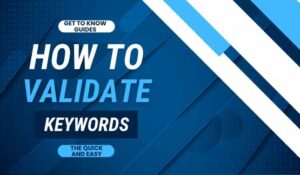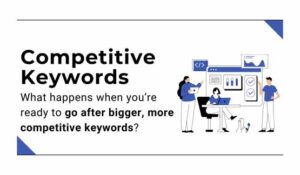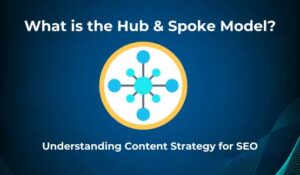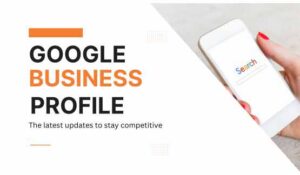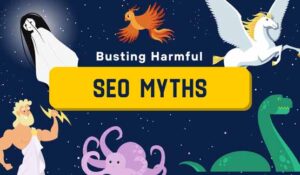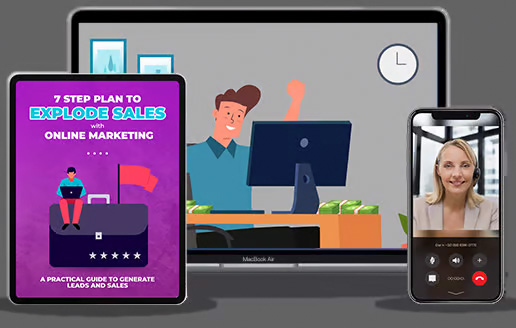Before we get into the tools, let’s get one thing straight: you need a website. Everything we’re about to cover assumes you have a place online to send potential customers. If you don’t have a website yet, start here to learn how to get one built.
Getting started, there are free marketing tools for small business owners that you can use right away without making a huge investment. A lot of your marketing budget typically goes toward knowledgeable help and paid tools. However, there are very effective free marketing tools for small business that won’t cost you anything but your time to set up.
You just need to know which free marketing tools for small business are available, how to use them, and when it might be time to upgrade. And at the end of this article, we’ll walk through a simple strategy marketers often use to drive leads and conversions for local businesses.
Tools That Help People Find Your Business
Visibility is the first step to making a sale. You can’t serve people who don’t know you exist.
- Google Business Profile is a must. It puts your business on Google Maps and helps you show up in local search results. You can post updates, hours, services, and collect reviews — all without spending a dollar.
- Apple Maps, Bing Places, and even Yahoo Local are worth the few minutes it takes to claim and optimize your listing. While traffic here is smaller, you’re still reaching real customers using iPhones, Windows, or default search engines.
These tools work in the background to improve your visibility, and they don’t require constant management once they’re set up.
Tools That Help You Understand What’s Working
Once people start visiting your site, the next challenge is knowing what’s actually working.
- Google Analytics 4 (GA4) gives you traffic reports, user behavior, and source tracking. It’s essential for knowing what pages people visit and how long they stay.
- Google Search Console tells you what search terms people use to find you, and helps you fix issues that might keep your site from ranking.
- Microsoft Clarity shows heatmaps and session recordings so you can see where users click, scroll, or get stuck. It’s visual, easy to use, and incredibly helpful for fine-tuning your website.
These tools aren’t just about data — they give you the insights you need to make smarter decisions.
Tools That Help You Convert Visitors Into Customers
You’ve been found. Now what? These free tools help you turn that visibility into actual business.
- Jotform lets you create contact forms, lead capture forms, surveys, or appointment forms with ease. Embed them on your site and collect submissions instantly.
- Calendly removes the back-and-forth of booking appointments. You can also embed your Calendly calendar directly on your website, making it easy for visitors to schedule a time without leaving your site. Share a link and let people schedule with you based on your availability.
- AWeber offers a free tier for email marketing. It’s enough to start sending automated follow-ups, newsletters, or drip campaigns to people who show interest.
- PayPal lets you invoice clients or accept payments without a monthly fee. You only pay when you make a sale — no overhead.
- SEMRush (free version) gives you a peek into your website’s SEO performance. While limited, it can still help you spot keyword opportunities or fix technical errors.
- Social Media platforms like Facebook, Instagram, and LinkedIn remain free to use and help you stay visible and build trust with your audience.
Free Is Good — But It Isn’t Perfect
Free tools are a great way to get started, but they come with trade-offs.
- Limited features or usage caps
- Branding from the platform (e.g., “Powered by Jotform”)
- Less automation or integration
- Slower support or fewer customization options
Think of it like this: free tools are a golf cart. They’ll get you around, especially on a well-maintained track. But if you’re racing for revenue, at some point you’ll want a vehicle with more horsepower.
Still, starting with free tools is smart. They let you build the foundation, prove the concept, and then scale when it makes sense.
And when those free tools are no longer enough — that’s often the right time to bring in a marketer. Professionals typically already pay for the premium versions of these tools and know how to use them efficiently. As traffic picks up, you’ll likely want to spend more time running your business and less time learning how to market it.
00000
How These Tools Work Together: A Simple Strategy
To make the most of these tools, it helps to understand how they fit together in a real-world marketing system. Here’s a common strategy that starts with getting traffic — and ends with a booked appointment.
Step 1: Drive Traffic to Your Website
Use free SEO tools like Google Search Console, Google Analytics, and the free version of SEMRush to identify the keywords your audience is searching for. These tools help you optimize your website so that more people can find you in local search results.
Step 2: Capture Leads
When someone visits your website, offer them something valuable — a guide, checklist, or offer — in exchange for their email address. Use Jotform to embed a lead capture form directly on your site.
It’s natural to ask: “Why not just let them call or buy something right away?” The answer is: not everyone is ready the first time they visit. Capturing the lead gives you the chance to follow up, answer questions, and build trust — instead of losing them forever.
Step 3: Nurture with Email
Once they’ve filled out your form, use AWeber to automatically follow up with a short email sequence. You stay top-of-mind while they consider their next step.
Step 4: Analyze and Improve
Use Google Analytics to see where your traffic is coming from, what people click, and how they behave. Search Console tells you what keywords are working. Microsoft Clarity shows you where people get stuck so you can fix it.
Step 5: Book the Appointment
Once they’re ready, Calendly makes it easy to book a free consultation directly from your site. It’s a seamless handoff from learning about your business to taking action — and it’s a live example of how this strategy closes the loop.
This funnel takes people from “just looking” to “ready to talk” — and it’s built entirely with free tools.
Want Help Tailoring This to Your Business?
Not sure which tools make sense for your niche? Need help implementing them?
We offer a free 15-minute consultation, either in person or over Zoom. We’ll help you:
- Choose the right tools for your goals
- Understand how to set them up
- Build a strategy based on what works for your business
[Book your free strategy session here] — powered by Calendly, naturally.
Before we get into the tools, let’s get one thing straight: you need a website. Everything we’re about to cover assumes you have a place online to send potential customers. If you don’t have a website yet, start here to learn how to get one built.
Getting started, there are ways you can market your small business right away without making a huge investment. A lot of your marketing budget typically goes toward knowledgeable help and paid tools. However, there are very effective marketing tools that you can use to get started that won’t cost you anything but your time to set up.
You just need to know where to find them, how to use them, and when it might be time to upgrade. And at the end of this article, we’ll walk through a simple strategy marketers often use to drive leads and conversions for local businesses.
Tools That Help People Find Your Business
Visibility is the first step to making a sale. You can’t serve people who don’t know you exist.
- Google Business Profile is a must. It puts your business on Google Maps and helps you show up in local search results. You can post updates, hours, services, and collect reviews — all without spending a dollar.
- Apple Maps, Bing Places, and even Yahoo Local are worth the few minutes it takes to claim and optimize your listing. While traffic here is smaller, you’re still reaching real customers using iPhones, Windows, or default search engines.
These tools work in the background to improve your visibility, and they don’t require constant management once they’re set up.
Tools That Help You Understand What’s Working
Once people start visiting your site, the next challenge is knowing what’s actually working.
- Google Analytics 4 (GA4) gives you traffic reports, user behavior, and source tracking. It’s essential for knowing what pages people visit and how long they stay.
- Google Search Console tells you what search terms people use to find you, and helps you fix issues that might keep your site from ranking.
- Microsoft Clarity shows heatmaps and session recordings so you can see where users click, scroll, or get stuck. It’s visual, easy to use, and incredibly helpful for fine-tuning your website.
These tools aren’t just about data — they give you the insights you need to make smarter decisions.
Tools That Help You Convert Visitors Into Customers
You’ve been found. Now what? These free tools help you turn that visibility into actual business.
- Jotform lets you create contact forms, lead capture forms, surveys, or appointment forms with ease. Embed them on your site and collect submissions instantly.
- Calendly removes the back-and-forth of booking appointments. You can also embed your Calendly calendar directly on your website, making it easy for visitors to schedule a time without leaving your site. Share a link and let people schedule with you based on your availability.
- AWeber offers a free tier for email marketing. It’s enough to start sending automated follow-ups, newsletters, or drip campaigns to people who show interest.
- PayPal lets you invoice clients or accept payments without a monthly fee. You only pay when you make a sale — no overhead.
- SEMRush (free version) gives you a peek into your website’s SEO performance. While limited, it can still help you spot keyword opportunities or fix technical errors.
- Social Media platforms like Facebook, Instagram, and LinkedIn remain free to use and help you stay visible and build trust with your audience.
Free Is Good — But It Isn’t Perfect
Free tools are a great way to get started, but they come with trade-offs.
- Limited features or usage caps
- Branding from the platform (e.g., “Powered by Jotform”)
- Less automation or integration
- Slower support or fewer customization options
Think of it like this: free tools are a golf cart. They’ll get you around, especially on a well-maintained track. But if you’re racing for revenue, at some point you’ll want a vehicle with more horsepower.
Still, starting with free tools is smart. They let you build the foundation, prove the concept, and then scale when it makes sense.
And when those free tools are no longer enough — that’s often the right time to bring in a marketer. Professionals typically already pay for the premium versions of these tools and know how to use them efficiently. As traffic picks up, you’ll likely want to spend more time running your business and less time learning how to market it.
How These Tools Work Together: A Simple Strategy
To make the most of these tools, it helps to understand how they fit together in a real-world marketing system. Here’s a common strategy that starts with getting traffic — and ends with a booked appointment.
Step 1: Drive Traffic to Your Website
Use free SEO tools like Google Search Console, Google Analytics, and the free version of SEMRush to identify the keywords your audience is searching for. These tools help you optimize your website so that more people can find you in local search results.
Step 2: Capture Leads
When someone visits your website, offer them something valuable — a guide, checklist, or offer — in exchange for their email address. Use Jotform to embed a lead capture form directly on your site.
It’s natural to ask: “Why not just let them call or buy something right away?” The answer is: not everyone is ready the first time they visit. Capturing the lead gives you the chance to follow up, answer questions, and build trust — instead of losing them forever.
Step 3: Nurture with Email
Once they’ve filled out your form, use AWeber to automatically follow up with a short email sequence. You stay top-of-mind while they consider their next step.
Step 4: Analyze and Improve
Use Google Analytics to see where your traffic is coming from, what people click, and how they behave. Search Console tells you what keywords are working. Microsoft Clarity shows you where people get stuck so you can fix it.
Step 5: Book the Appointment
Once they’re ready, Calendly makes it easy to book a free consultation directly from your site. It’s a seamless handoff from learning about your business to taking action — and it’s a live example of how this strategy closes the loop.
This funnel takes people from “just looking” to “ready to talk” — and it’s built entirely with free tools.
Want Help Tailoring This to Your Business?
Not sure which tools make sense for your niche? Need help implementing them?
We offer a free 15-minute consultation, either in person or over Zoom. We’ll help you:
- Choose the right tools for your goals
- Understand how to set them up
- Build a strategy based on what works for your business
Book your free strategy session here, or by using the scheduler below — powered by Calendly, naturally.


